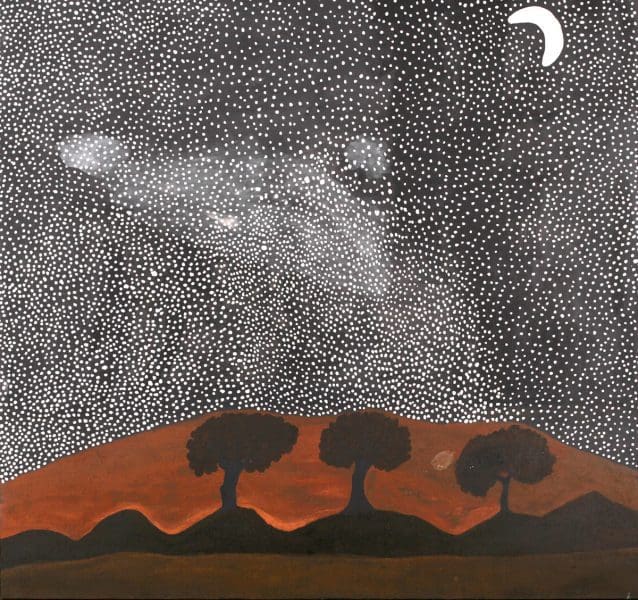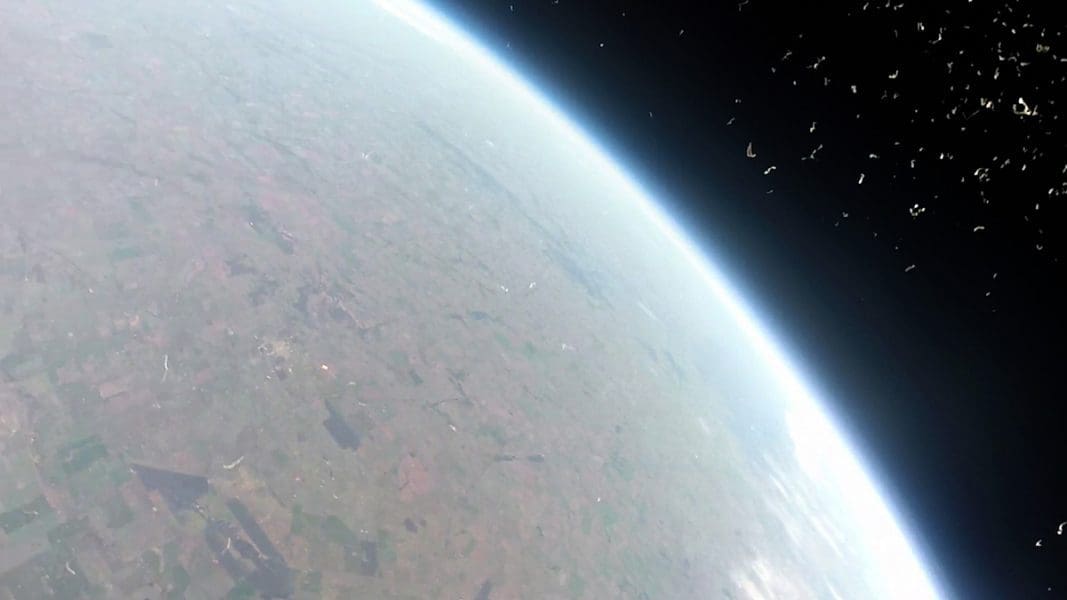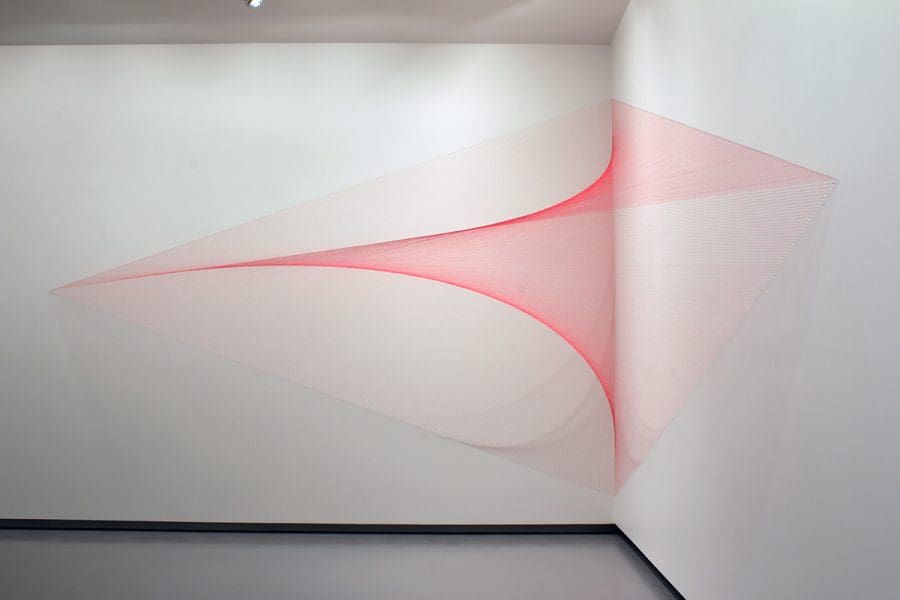
Making Space at the Table
NAP Contemporary’s group show, The Elephant Table, platforms six artists and voices—creating chaos, connection and conversation.

Rusty Peters, Three mothers for the moon, 2016, ochre on canvas, 150 x 150. Courtesy of the artist and Warmun Art Centre.

Mabel Juli, Garnkiny Ngarranggari, 2014, mowantu (ochre), Tharlngarri (Snappy Gum) charcoal on canvas, 150 x 150. Courtesy of the artist and Warmun Art Centre.

David Haines and Joyce Hinterding, The helium balloon of SoundShip (descender 1) explodes at 33,722m marking the point that the payload begins its return to earth, 2016. Courtesy of the artists and Sarah Cottier Gallery, Sydney.

Hiraki Sawa, Still from Dwelling, 2002, digital film, duration 9.22mins. Courtesy of the artist and James Cohan Gallery, New York.

Sandra Selig, heart of the air you can hear, 2011, spun polyester sewing thread, nails, paint. Monash University Museum of Art, 3m x 4m x 5.7m. Collection: National Gallery of Victoria. Photography by Sandra Selig.

Richard Serra, Prop, 1968, lead, 259 x 152 x 112cm. Collection: National Gallery of Australia, Canberra. Purchased 1973 © Richard Serra/ARS. Licensed by Viscopy, 2016.
We owe a lot to gravity. After all, it is the anchor that tethers us to the earth. The term itself conjures emotional weight as well as the accumulative results of scientific discovery. Mass, opposing forces, flight, exploration and the far flung reaches of space all connect in some way to the forces of gravity.
Gravity (and Wonder) is a collaborative project between Penrith Regional Gallery & The Lewers Bequest and The Museum of Applied Arts and Sciences (MAAS, formerly Powerhouse Museum). In this group exhibition curators Dr Lee-Anne Hall and Katie Dyer investigate the implications of gravity by combining the inherently exploratory nature of art and science through the work of 13 contemporary artists and a series of significant pieces from the MAAS collection.
Several of the pieces in the show use flight as a focus and it is interesting to see the progression of ideas surrounding its development and use expressed through science and contemporary art.
Diagram for flying machine, 1889, from the MAAS collection, is a drawing by Australian inventor and early pioneer of flight Lawrence Hargrave. “Flying encompasses two major problems,” says MAAS curator Katie Dyer. “Overcoming the weight of an object by some opposing force and controlling the object in flight. Both relate to the object’s weight and centre of gravity. Hargrave’s diagram illustrates what he called a ‘vibratory flying machine,’ a model propeller airplane powered by compressed air.”
In contrast, Sound Ship (descender 1), 2016, a work by David Haines and Joyce Hinterding commissioned specifically for Gravity (and Wonder), documents the ascent and descent of recording instruments dropped from the edge of space. “It involves vision and sound captured in the process of sending a payload with recording instruments via a latex weather balloon to 33,700 metres above the earth,” explains director of Penrith Regional Gallery Dr Lee-Anne Hall. “At very low pressure the balloon bursts, a parachute partially deploys and allows the instruments to rapidly descend to the earth.”
Creating works that question our perception of the space around us, Brisbane based artist Sandra Selig uses stretched nylon cord to create the delicately evocative installation, Behind the Great Mirror, 2016. Amy Joy Watson demonstrates the effects of gravity in a geometric ode to helium and balsa wood, while the atmospheric nightscapes of Rusty Peters and Mabel Juli contrast with the lead weight of Richard Serra’s Prop, 1968, and Inge King’s welded steel Flying Form, 1950.
Much like the force the exhibition is based on, Gravity (and Wonder) revolves around a strong central core and stretches across scientific advances. It encourages us to look up, to move beyond our comfort zones and to explore. The varied selection of work gathered here, coupled with new commissions and an inclusive series of public events, highlights the vital role Australia’s regional galleries play in facilitating new avenues of discovery.
Gravity (and Wonder)
Penrith Regional Gallery & The Lewers Bequest
3 September – 27 November